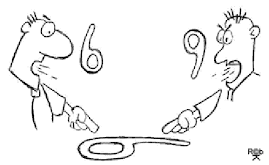Like me you all might be keen to know these facts on cricket. I am a fan of many world famous cricket players. Let us go deeper in to this study
Origin
No one knows when or where cricket began but there is a body of evidence, much of it circumstantial, that strongly suggests the game was devised during Saxon or Norman times by children living in the Weald, an area of dense woodlands and clearings in south-east England that lies across Kent and Sussex. In medieval times, the Weald was populated by small farming and metal-working communities. It is generally believed that cricket survived as a children's game for many centuries before it was increasingly taken up by adults around the beginning of the 17th century
It is quite likely that cricket was devised by children and survived for many generations as essentially a children’s game. Adult participation is unknown before the early 17th century. Possibly cricket was derived from bowls, assuming bowls is the older sport, by the intervention of a batsman trying to stop the ball from reaching its target by hitting it away. Playing on sheep-grazed land or in clearings, the original implements may have been a matted lump of sheep’s wool (or even a stone or a small lump of wood) as the ball; a stick or a crook or another farm tool as the bat; and a stool or a tree stump or a gate (e.g., a wicket gate) as the wicket
The 1st recorded cricket match took place in Kent in 1646 and, by the late 1600s fines were actually handed out for those missed church church to play. Cricket was popular and widely documented in England during the 1700s. In 1706 William Goldwyn published the 1st description of the game. He wrote that 2 teams were 1st seen carrying their curving bats to the venue, choosing a pitch and arguing over the rules. They pitched 2 sets of wickets, each with a "milk-white" bail perched on two stumps; tossed a coin for 1st knock, the umpire called "play" and the "leathern orb" was bowled. They had 4-ball overs, the umpires leant on their staves (which the batsmen had to touch to complete a run), and the scorers sat on a mound making notches.
The 1st written "Laws of Cricket" were established in 1744. They stated, "the principals shall choose from amongst the gentlemen present 2 umpires who shall absolutely decide all disputes. The stumps must be Twenty-two inches high and the bail across them six inches. The ball must be between 5 & 6 ounces, and the two sets of stumps Twenty-two yards apart". There were no limits on the shape or size of the bat. It appears that 40 notches was viewed as a very big score, probably due to the bowlers bowling quickly at shins unprotected by pads. The world's first cricket club was formed in Hambledon in the 1760s and the Marylebone Cricket Club (MCC) was founded in 1787.
During the 1760's and 1770's it became common to pitch the ball through the air, rather than roll it along the ground. This innovation gave bowlers the weapons of deception through the air, length, plus increased pace. It also opened new possibilities for spin and swerve. In response, batsmen had to masters shot selection and timing. One immediate consequence of this was the replacement of the curving bat with the straight one. All of this raised the premium on skill and lessened the influence of rough ground and brute force. It was in the 1770's that the modern game began to take shape.
The weight of the ball was limited to between 5 and a 1/2 and five and 3/4 ounces, and the width of the bat to 4 inches. The latter ruling followed an innings by a batsman called "Shock" White, who appeared with a bat the width of the wicket. In 1774, the first leg before law was published. Also around this time, a third stump became commonplace.
The first reference to it being played as an adult sport was in 1611, when two men in Sussex were prosecuted for playing cricket on Sunday instead of going to church [6]. In the same year, a dictionary defines cricket as a boys' game and this suggests that adult participation was a recent development [
In 1744, the Laws of Cricket were codified for the first time and then amended in 1774, when innovations such as lbw, middle stump and maximum bat width were added. These laws stated that the principals shall choose from amongst the gentlemen present two umpires who shall absolutely decide all disputes. The codes were drawn up by the so-called "Star and Garter Club" whose members ultimately founded MCC at Lord's in 1787. MCC immediately became the custodian of the Laws and has made periodic revisions and recodifications subsequently
The first ever international cricket game was between the USA and Canada in 1844. The match was played at the grounds of the St George's Cricket Club in New York
In 1859, a team of leading English professionals set off to North America on the first-ever overseas tour and, in 1862, the first English team toured Australia.
In 1889 the immemorial four ball over was replaced by a five ball over and then this was changed to the current six balls an over in 1900. Subsequently, some countries experimented with eight balls an over. In 1922, the number of balls per over was changed from six to eight in Australia only. In 1924 the eight ball over was extended to New Zealand and in 1937 to South Africa. In England, the eight ball over was adopted experimentally for the 1939 season; the intention was to continue the experiment in 1940, but first-class cricket was suspended for the Second World War and when it resumed, English cricket reverted to the six ball over. The 1947 Laws of Cricket allowed six or eight balls depending on the conditions of play. Since the 1979/80 Australian and New Zealand seasons, the six ball over has been used worldwide and the most recent version of the Laws in 2000 only permits six ball overs.
Limited overs cricket
In the 1960s, English county teams began playing a version of cricket with games of only one innings each and a maximum number of overs per innings. Starting in 1963 as a knockout competition only, limited overs grew in popularity and in 1969 a national league was created which consequently caused a reduction in the number of matches in the County Championship.
Although many "traditional" cricket fans objected to the shorter form of the game, limited overs cricket did have the advantage of delivering a result to spectators within a single day; it did improve cricket's appeal to younger or busier people; and it did prove commercially successful.
Cricket's newest innovation is Twenty20, essentially an evening entertainment. It has so far enjoyed enormous popularity and has attracted large attendances at matches as well as good TV audience ratings. The inaugural ICC Twenty20 World Cup tournament was held in 2007 with a follow-up event in 2009. The formation of Twenty20 leagues in India - the unofficial Indian Cricket League, which started in 2007, and the official Indian Premier League, starting in 2008 - raised much speculation in the cricketing press about their effect on the future of cricket.


